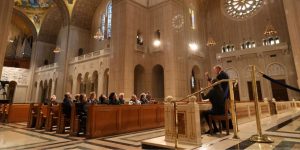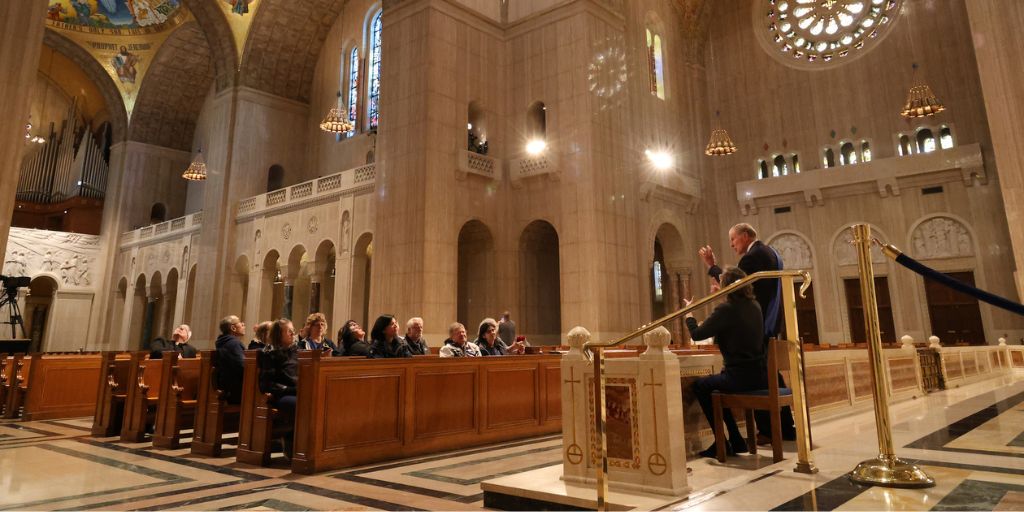
The National Shrine is delighted to announce the launch of a Deaf and Blind Tour Initiative, in order to offer those who are hearing or visually impaired an opportunity to experience the Basilica more fully.
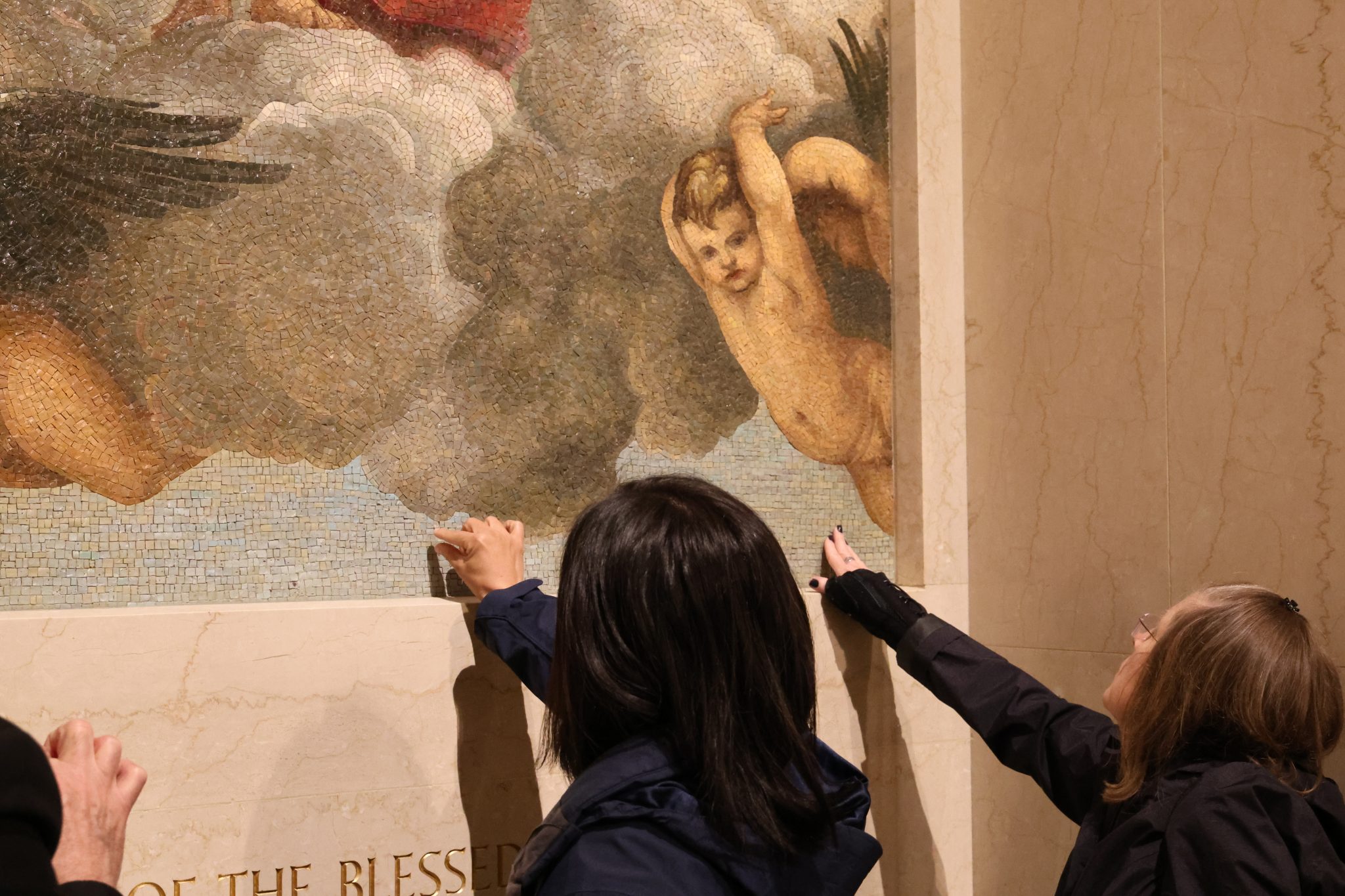
In today’s post, we invite you to read our interview with the Basilica’s Director of Visitor Services, Dee Steel, as she answers questions about how these new tours were developed and what visitors can expect.
How did the Basilica develop its tours for visitors who are deaf?
Multiple people at the Shrine helped make these tours possible! One of our docent volunteers and Development employees, Marilyn Lasecki, first conceived the idea, and then the ASL interpreter for our Sunday Noon Mass, Katy Betker, partnered with us to develop these specialized tour programs with the enthusiastic support of Monsignor Rossi.
Can you tell us what makes these tours special? What can visitors expect?
For the tours for the deaf, we have specially trained volunteer docents who guide visitors through the National Shrine, working in tandem with our ASL interpreter. To create these tours, we worked closely with Katy Betker, whose husband is deaf, to update the tour script and ensure it was as ASL-friendly as possible. There weren’t a lot of changes, but some of the vocabulary used during the standard tours is not in ASL, so you can’t translate it word for word. Katy also helps train the guides, emphasizing the importance of enunciating clearly for lip readers, and ensuring that when pointing things out, such as the domes in the Great Upper Church, they wait for visitors to look back at the interpreter before continuing to speak.
How did the Basilica develop its tours for visitors who are blind?
The tour for the blind was developed with direct input from Fr. Mike Joly, a blind priest from St. Joan of Arc Parish in Yorktown, who has been bringing his parishioners on pilgrimage to the Shrine for many years. He emphasized the need for a tactile model of the Shrine, explaining how touching and feeling a structure is important in helping visually impaired visitors envision it. We also had a special training meeting to review the modified tour script while doing a walkthrough of the Shrine, so that the guides understand how to best accommodate these visitors.
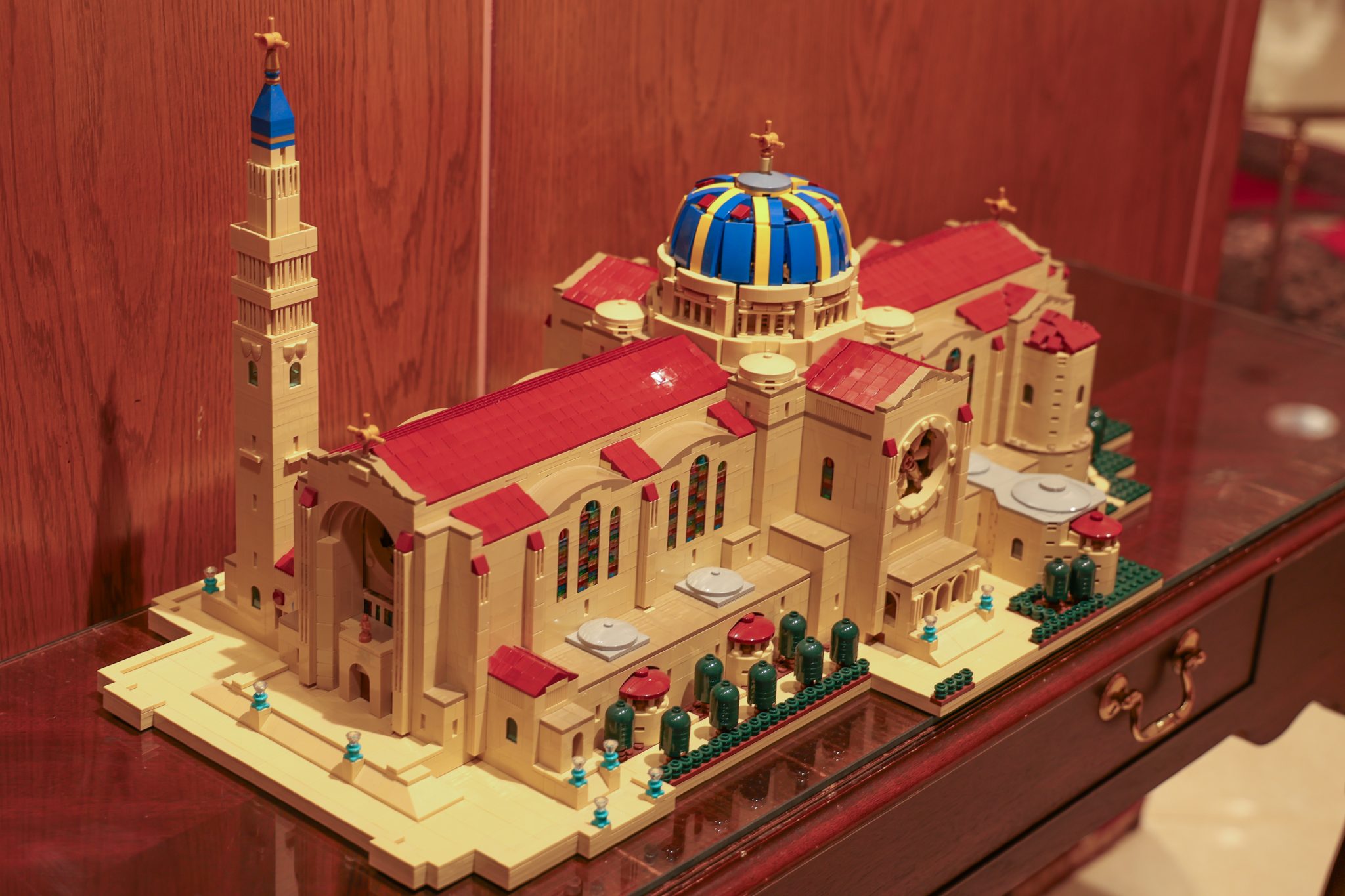
What kind of tactile model of the Shrine do you have available for the tours for the blind?
When considering our options, I remembered an old blogpost from our website that featured pictures of a Lego model of the Shrine. Thinking it would be the perfect addition to our tour for the blind, we contacted the builder, John Davisson, and told him about our new initiative. He kindly agreed to loan us his Lego model to see if it would work, and expressed his willingness to reproduce a second one for us to keep if so. We are excited to make the Lego Basilica a permanent feature of our tours for the blind!
When are these tours offered? Can visitors just drop in, or do they need to schedule a tour in advance?
As stated on our Tours page, we ask that visitors interested in participating in our tours for the blind or deaf provide us with at least two weeks’ advance notice so we can ensure that our specially trained guides and ASL interpreter (if needed) are available on the requested date. Once the team members have been scheduled for this specialized tour, visitors will be informed of their specific tour time and where to meet their guides upon arriving at the Basilica. We aim to accommodate every request.
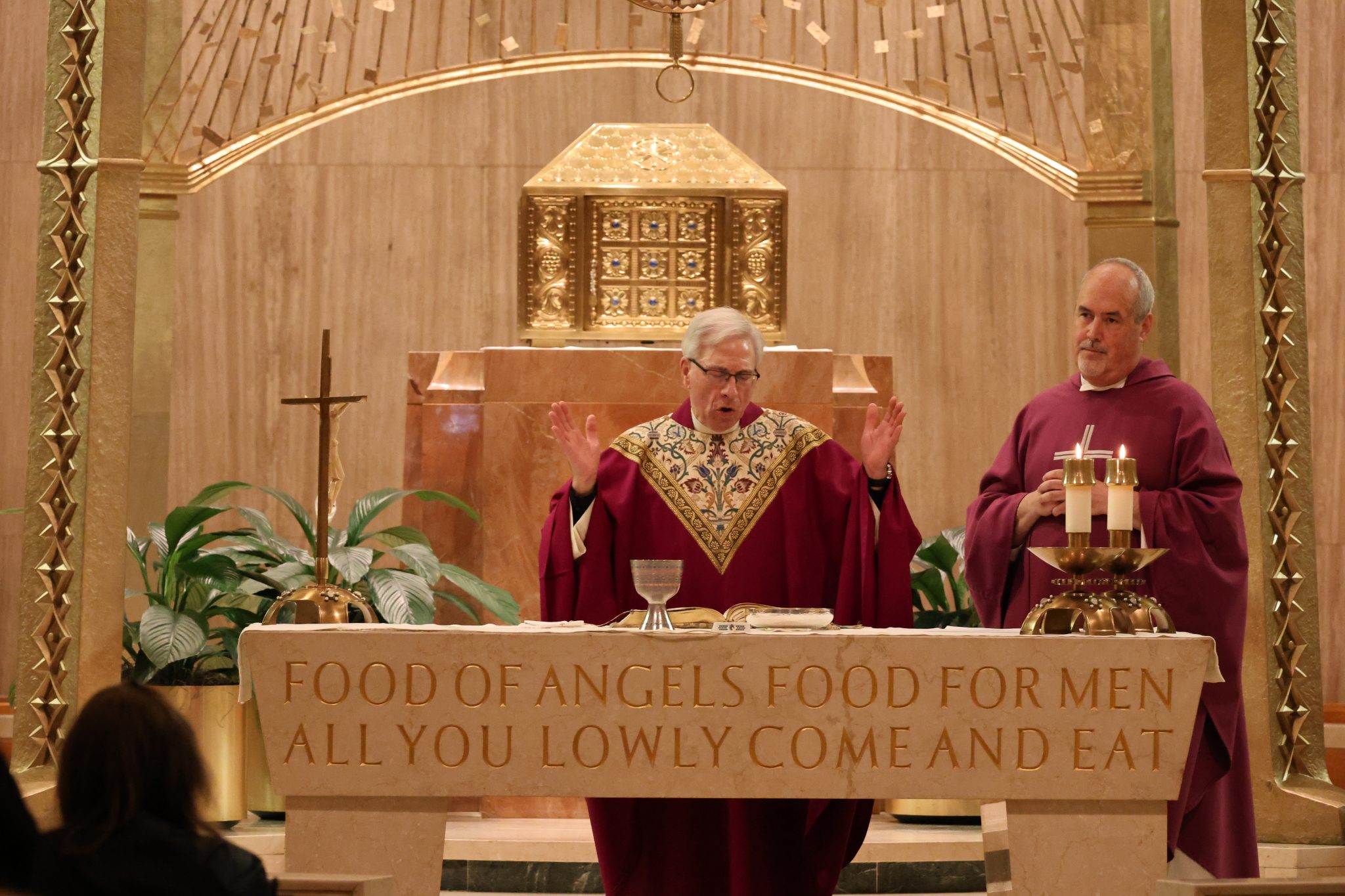
Is there anything else you’d like to share about these new tours?
We recently held our inaugural Tour for the Deaf for a group from the St. John’s Deaf Center in Eastpointe, MI. Accompanying the group was Fr. Mike Depcik, a deaf priest who gave valuable input on the tour and concelebrated a private Mass with Monsignor Buonanno prior to the tour, which was a huge success!

